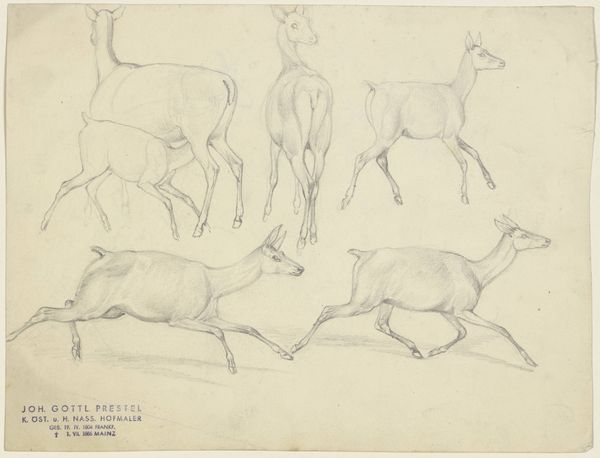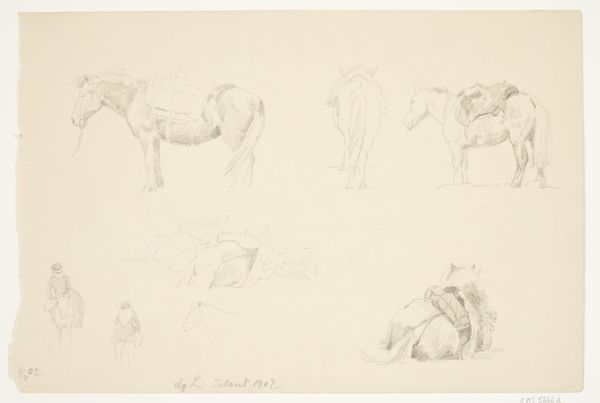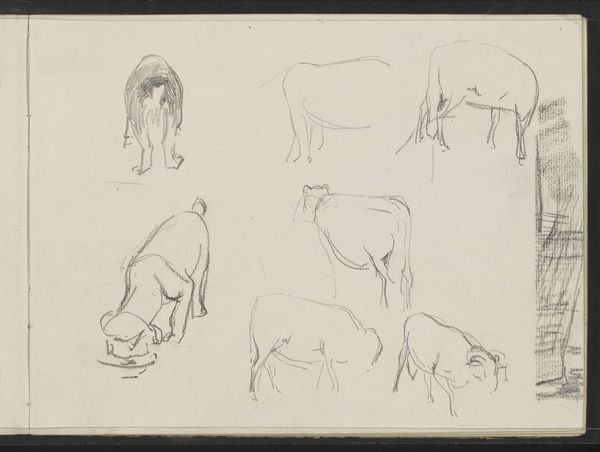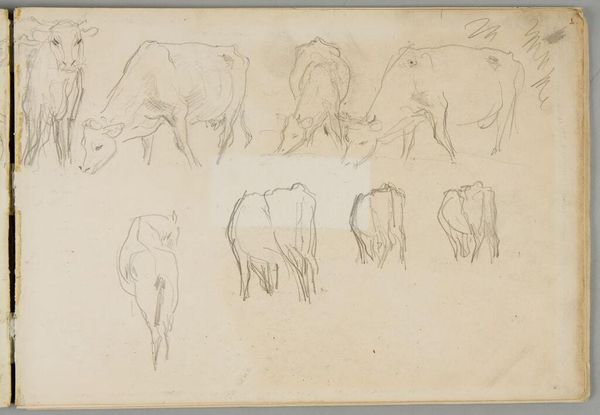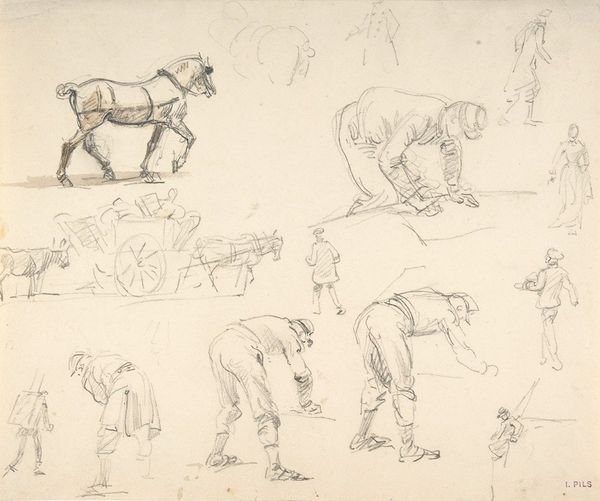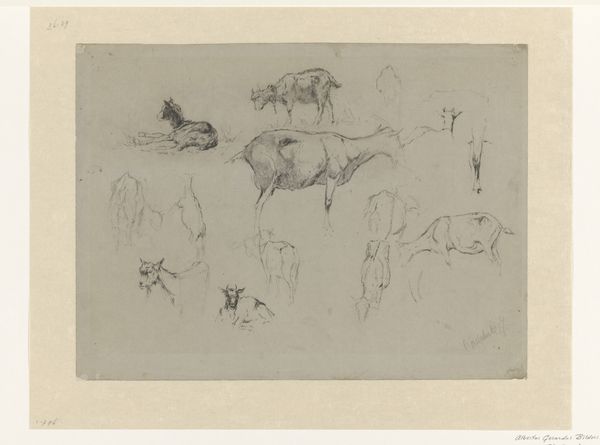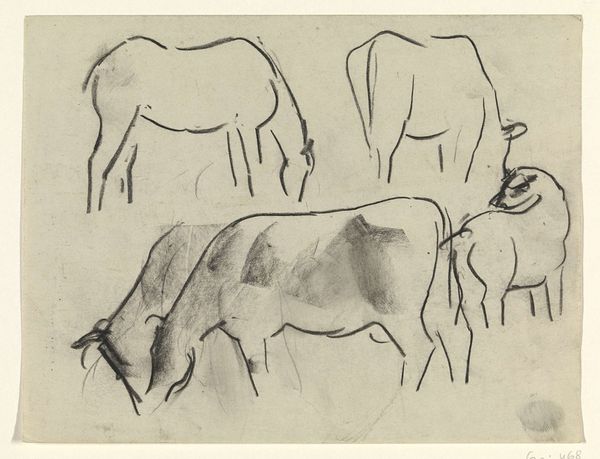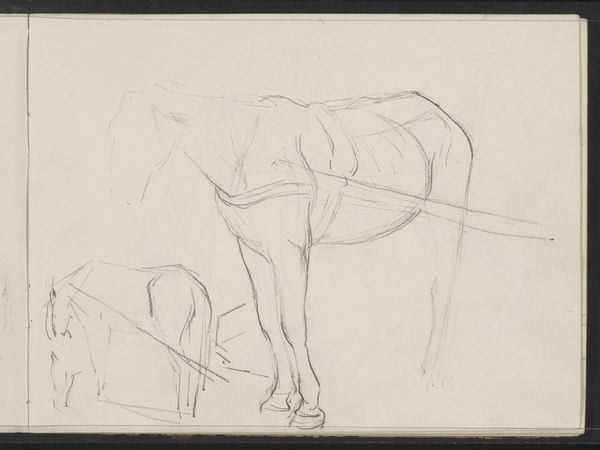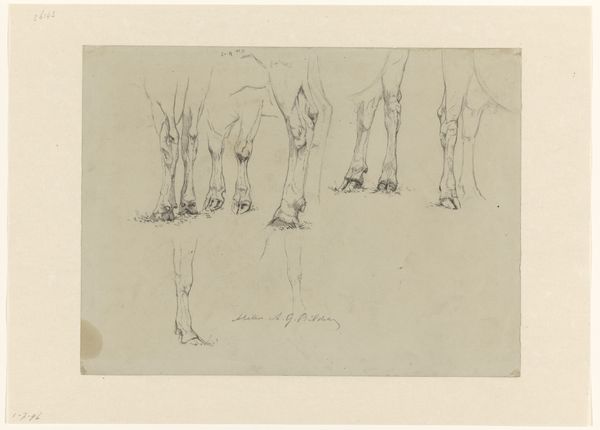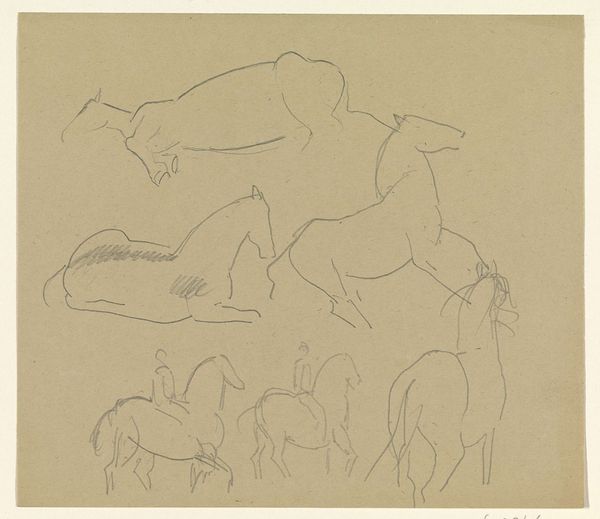
drawing, paper, pencil, graphite
#
drawing
#
landscape
#
paper
#
pencil
#
graphite
#
academic-art
Copyright: Public Domain
Curator: This sheet of studies, attributed to Johann Erdmann Gottlieb Prestel, offers a series of pencil and graphite sketches of horses in various poses. Editor: They seem to be at rest, grazing mostly. I like how light the touch is – almost ethereal. You can almost feel the paper’s texture coming through. Curator: Exactly! We must consider that studies such as these would have been the basis of any artist’s understanding of animal anatomy in this period, likely rooted in an economic infrastructure which depended on labor from such animals. Prestel may be grappling with representing power relations between the natural world and the humans, if at a preliminary stage. Editor: It strikes me how essential the artist's tools, pencil and paper, are to this act of seeing and understanding. Look how each line defines the mass and movement. It reminds you that images, regardless of their subject matter, originate in acts of human making that engage hand, material, and idea. Curator: Consider the placement of these sketches— almost haphazard on the page, as though capturing the immediacy of observation. The relationship with Academic art surfaces, which emphasizes draftsmanship to render its mostly idealist subject matters. But here the relationship between naturalism and class is palpable. What are your thoughts? Editor: Absolutely. This kind of sheet shows the raw data of visual processing. By studying the materials – graphite on paper – we gain a better understanding of how the final "artwork" comes into being. The physicality of rendering allows us to conceptualize labor, and artistic output together. It also helps us see that images don't just spring into being; labor underlies representation. Curator: So, perhaps through seemingly simple sketches, we begin to confront broader questions of production, the construction of representation and of art itself. Editor: Yes, and hopefully prompting us to consider our own relationship with seeing and making within our cultural milieu.
Comments
No comments
Be the first to comment and join the conversation on the ultimate creative platform.

